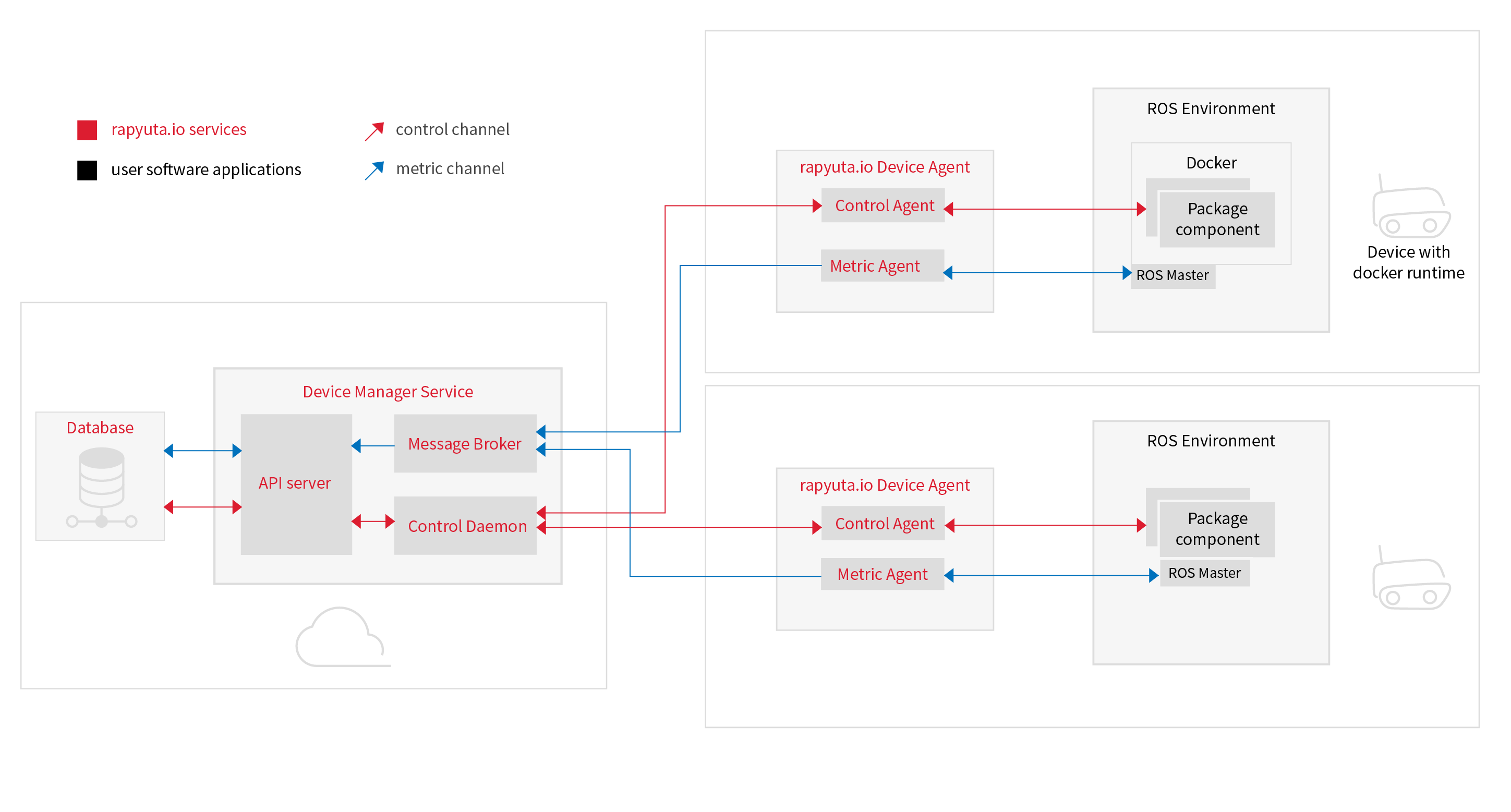In this article
Help us make these docs great!
All rapyuta.io docs are open source. See something that's wrong or unclear? Submit a pull request.
Make a contributionDevice Management Architecture and Feature
The rapyuta.io platform attempts to bring all the various parts of your robotics solution under one roof. The unified tooling, API, and workflows strive to maintain uniformity in process and capabilities enabling the developer to focus less on managing distributed infrastructure and more on the solution.
To make this feasible rapyuta.io implements device management capabilities into the core of the platform.
The following sections explain how to connect, interact, and use robots and devices on the platform.
Architecture
The following image illustrates the architecture of the device
manager system.

Device management in rapyuta.io
The device management layer in rapyuta.io is a critical part of the base infrastructure and services to enable core functionality.
The following sections are a non-exhaustive set of some of its responsibilities and features.
Communication
The device manager service uses a server-agent communication model where the device manager is the server-side component, and the device manager agent is the agent component of the model.
Network Address Translator (NAT) Traversal
Since the device manager agent initiates the connection to the device manager, the communication works behind a firewall and NAT network. You do not need to open any incoming ports on your firewall.
Management Communication
rapyuta.io provides low throughput channels: control and telemetry channels. These channels are activated when the device is powered-on; connected to the internet, and registered with rapyuta.io The channels are optimized for reliability, security for small payloads like configuration commands, metrics, and logs, and minimum utilization of resources.
- Control channel
This channel provides a persistent connection between the device manager service and the device manager agent. The service communicates with the agent by using the publish-subscribe pattern. The device manager service sends control commands to and receives event messages from the device manager agent. The channel secures each device with a unique rotating AES key-based encryption. - Telemetry channel
The registered device generates metrics and logs data. The device manager agent sends this data to the device manager service through the telemetry channel. The channel uses TLS encryption to secure each device together with a unique token.
Application communication is handled in different channels. Learn more with a dedicated set of features for ROS users
Remote Configuration
Dynamic configurations allow you to control a device or a group of devices based on a large set of configuration parameters.
Remote Monitoring
Remote monitoring provides better visibility into devices regardless of where they are located. The device manager service enables you to collect and visualize execution metrics like CPU usage, memory usage, battery level, etc. of the device.
Security
The device manager ensures that the data (telemetry and control) exchanged between various components are encrypted.
- End to end encryption
On successful registration of a device with the device manager, all further communication between the server and the agent is encrypted using public-key cryptography. - Identity validation
All devices that are registered with the device manager will possess unique credentials that are visible only to you. These credentials are used to identify devices across communication channels.